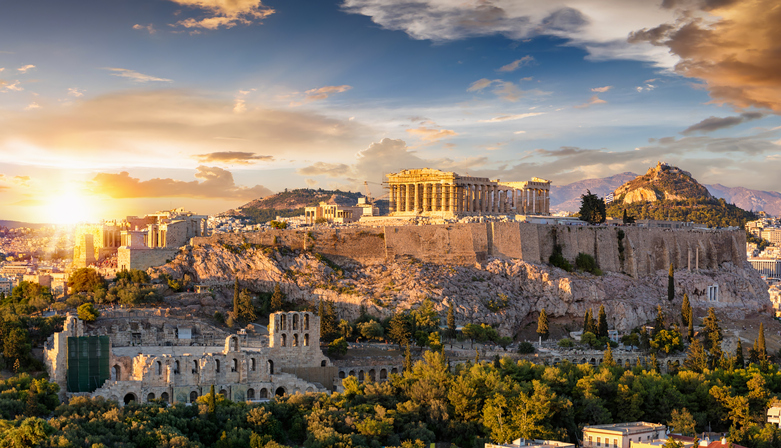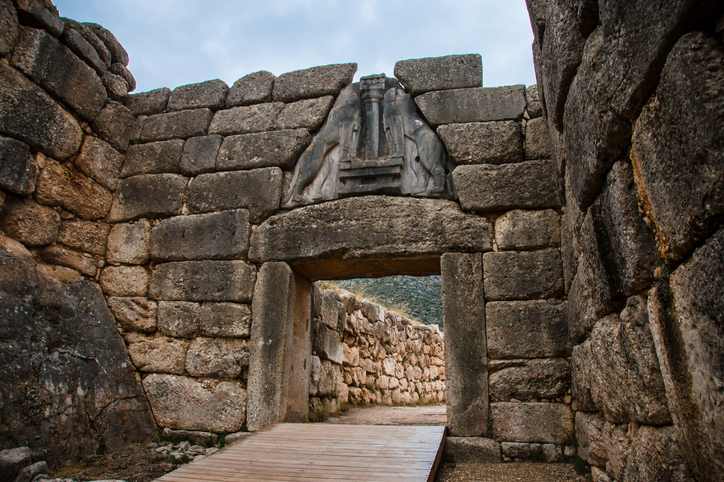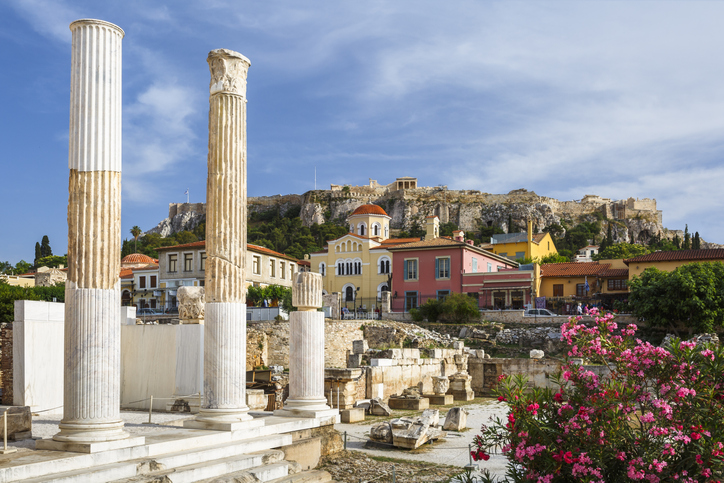Athens is a city that should be discovered in parts. The city’s rich historical and archaeological heritage means it deserves more than one visit. This time, we are going to focus on the main archaeological finds. Are you ready to feel like Indiana Jones?
The Acropolis:
Perhaps the top must-see sight in Athens. It’s located on a rocky outcrop that can be seen from most parts of the city. The Acropolis was originally built for defensive purposes, and it contains many of the best known monuments from the classical era such as the Parthenon, the Erechtheion and the Temple of Athena Nike.
The best known monument is the Parthenon, an iconic Greek symbol. This imposing Doric building housed a 12 metre tall sculpture of the goddess Athena.
The Erechtheion is said to be sacred, as it’s located on the spot where it’s alleged Athena made the first olive tree grow. It’s supported by Caryatids, columns sculpted in the shape of female figures.

The complex also includes the Temple of Athena Nike, which had an image of the goddess with her wings cut so she could not leave Athens.
The Ancient Agora:
The Ancient Agora was the heart of Athens, a place where meetings, sporting events and political debates were held. It also included the market and was considered a sacred place.
The Temple of Olympian Zeus stands half a kilometre from the Acropolis. The enormous construction originally had more than one hundred columns, each fifteen metres high. Today there are only fifteen left.
To the northwest of the temple lies the Arch of Hadrian, a marble arch measuring 18 metres tall.
The Theatre of Dionysus
This building, located to the south of the Acropolis, is dedicated to the god of wine and theatre. It has been well preserved and sitting in the stands gives you an idea of how the ancient Greeks enjoyed the theatre.
Hadrian’s Library:
Only a few ruins remain nowadays, but we can still get an idea of its vast original scale. Built under orders from Emperor Hadrian, it was originally surrounded by 100 columns.
Trip to Classical Greece: Corinth, Mycenae and Epidaurus
Discover how the Ancient Greeks lived in a visit to the Argolis region.
In Corinth, a city with 300,000 inhabitants, you can visit the Corinth Canal, an impressive feat of engineering, which joins the Aegean and the Ionian seas.
In Mycenae, you’ll visit one of the best-preserved archaeological sites in Greece, which includes monuments such as the Lion Gate, the Treasury of Atreus and the royal tombs.

In Epidaurus, the best known monument is the theatre, which is very well preserved. It’s even the venue for the Athens Summer Festival, and can accommodate up to 14,000 people.
Excursion to Delphi
Delphi is a very touristic town with stunning views over the surrounding valley and sea. It has a wide range of restaurants and bars with spectacular views and a fascinating archaeological museum. Given its location on Mount Parnassus, the best way to get there is by renting a car or paying for a tour.
More art: museums
As we have seen already, the museums in Athens can be found in the open air, and you can enjoy the vestiges of history simply by walking around. However, there are several museums that are truly unmissable.
The Acropolis Museum
Located just 300 metres from the Acropolis. The museum covers a vast 14,000m2 and includes around 4000 different artefacts. If you go up to the third floor, you can look out directly over the Acropolis, as the museum was built specifically to offer visitors those views.
It’s the most famous museum in the city and houses works of art like the Caryatids, columns sculpted in the form of priestesses that used to be on the Erechtheion.
National Archaeological Museum
It houses artefacts from prehistory to antiquity that have been found in Greece. It’s a neoclassical building that also includes an extensive collection of Egyptian art.
Art museum
This museum has more than 3000 artefacts from the Cyclades Islands, Cyprus and Ancient Greece. It includes a wide sample of remains from the different cultures that flourished in the region between the years 4BC and 6AD.
The National Gallery of Athens
Also known as the Alexandros Soutzos Museum, the building was opened to the public in 1900. It features an extraordinary collection of Greek painting and sculpture. Although it mainly houses works by Greek artists, there are also pieces by Caravaggio, Picasso and El Greco on display, among others.






